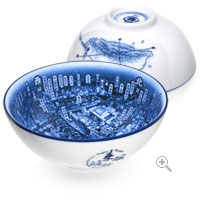
 ▲ 趣遊碗007《來碗艋舺》
▲ 趣遊碗007《來碗艋舺》
艋舺,臺北市萬華區古稱,源自平埔族語「獨木舟」;位大漢溪與新店溪原交匯處,昔為貿易樞紐,稱「一府二鹿三艋舺」。「艋舺龍山寺」構成核心區域,不問手中有沒有香,各路訪客在此皆受庇佑。走訪艋舺,可別錯過台灣首座觀光夜市「華西街夜市」與臺北現存最完整清代街廓「剝皮寮」。此外尚有各類零售、批發市場與專業街,無關銀兩,有閒,24小時皆可入內尋寶。
Monga, the old name of Wanhua district of Taipei, originating from ‘canoe’ in Pingpu language, locates at the place where Dahan river and Sindian river once intersected, which then had occupied as a commercial pivot. Hereby goes the old saying: ‘First Fu, second Lu, third Monga.’ The central area of Monga surrounds the Lungshun temple, where travellers are blessed whether s/he lights incense or not. When visiting Monga, you shouldn't miss the first night market in Taiwan— Huashi Street Night Market, nor the most well-preserved street block of Qing period in Taipei— Bo-Pi Liao. Besides, various markets and specific goods streets, still await your 24-hour treasure-seeking— your leisure is the entrance fee.
艋舺とは、平埔族語の「丸木舟」に由来する、台北市の万華区を指す旧名である。大漢渓と新店渓の交わった所に位置したため、昔は貿易中枢となり、「一府二鹿三艋舺」と名声を博した。中心地「艋舺龍山寺」では、手にお香の有無を問わず、訪ねてきた客なら誰でも神の恵みを得る。艋舺へ旅するなら、台湾初の観光夜市「華西街夜市」と、台北でもっとも保存の良い清朝の町並み「剝皮寮」を見逃さないでください。さらに、心にゆとりを、各卸し売りや小売り場、問屋街などで、宝探しをしようか。